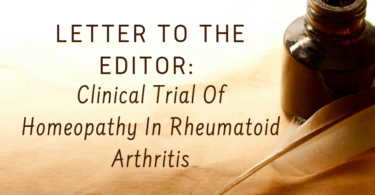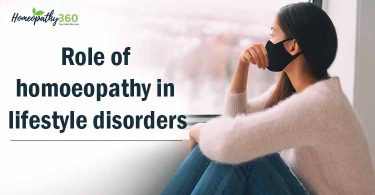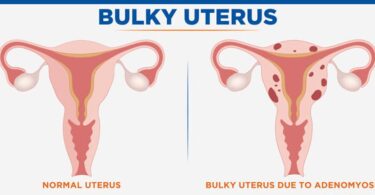Authors:
Dr. Ashok yadav, HOD Dept. Of Practice of Medicine (Hom.) Dr. M.P.K. Homoeopathic Medical College, Hospital and Research Center. Homoeopathy University, Jaipur.
Dr. Virendra chauhan, proffesor Dept. Of Practice of Medicine (Hom.) Dr. M.P.K. Homoeopathic Medical College, Hospital and Research Center. Homoeopathy University, Jaipur.
Dr. Bhupendra Arya , MD Scholar, Department of Practice of Medicine , Dr. M.P.K Homoeopathic Medical College, a constituent college of Homoeopathy University, Jaipur.
Abstract: Psoriasis is chronic inflammatory skin disease results from genetic, environmental and immunological factors. This article deals with an overview of Psoriasis, focusing upon it’s various aspects along with Homoeopathic management of the same.
Keywords:, Psoriasis, chronic inflammatory skin disease , Autoimmune ,Homoeopathy.
Introduction –Psoriasis is chronic inflammatory, hyperproliferative skin disease which is characterised by well-defined, erythematous scaly plaques, mainly affecting extensor surfaces and scalp1. The worldwide prevalence of psoriasis is approximately 2–3% 2 and 0.44-2.8 per cent in India. Psoriasis can present at any age but commonly affects in third or fourth decade with males being affected two times more common than females. Psoriasis impairs the quality of life of patients and their families resulting in great physical, emotional and social burden4.
Etiology 3-The exact etiology is unknown, but it is considered to be an autoimmune disease mediated by T lymphocytes. There is an association of HLA antigens seen in many psoriatic patients.
Genetic and environmental factor– Familial history.
Trauma– Mechanical, chemical, and radiational trauma.
Drugs– Certain drugs like chloroquine, beta-blockers, and NSAIDs.
Sunlight– Summer improves psoriasis while winter aggravates.
Triggering factors– Infections, psychological stress, alcohol, smoking, obesity.
Pathophysiology– The pathophysiology of psoriasis involves infiltration of the skin by activated T cells which stimulate proliferation of keratinocytes. This dysregulation in keratinocyte turnover results in the formation of thick plaque.The epidermal cells fail to secrete lipids which results in flaky and scaly skin, which is typical of psoriasis.
Site3- Scalp, extensors surfaces of knees and elbows and lumbosacral region.
Classification of psoriasis– There is two type of psoriasis.
Type 1 psoriasis- Psoriasis which has a positive family history, starts before age 40 and is associated with HLA-Cw6.
Type 2 psoriasis- Psoriasis does not show a family history, presents after age 40, and is not associated with HLA-Cw6.
Different presentation-
Plaque psoriasis- It is the most common type of psoriasis which affects 85% to 90% patients. The typical lesion is erythematous plaques with silvery scales most commonly over extensors of extremities, on the elbows, knees, scalp, and back.
Guttate psoriasis- Most common in children after an upper respiratory tract infection with the streptococcal organism. The lesion are erythematous and scaly raindrop-shaped mainly over trunk and back. It is the type of psoriasis having the best prognosis.
Pustular psoriasis- It is of two types localized and generalized. The lesion are small non-infectious pus-filled lesions with erythematous plaque.
Erythrodermic psoriasis- It is one of the rarest forms of psoriasis (1%–2.25% of patients with psoriasis). It is characterized by diffuse erythema, with or without scaling, involving >75% of the skin surface.
Sebopsoriasis– It is a form of psoriasis which typically manifests as red plaques with greasy scales. It commonly affects areas scalp, forehead, nasolabial folds, sternum, and retro-auricular folds.
Psoriatic arthritis- It is a form of chronic inflammatory arthritis which affects 30% patients with psoriasis.
Assessment and investigation- Diagnosis is made by clinical morphology and site of lesions3. Psoriasis Area Severity Index (PASI) and Dermatology Life Quality Index (DLQI) are most widely used measurement tool1.
Homoeopathic remedy for Psoriasis-
Arsenicum Album- Dry and scaly; cold, blue and wrinkled; with cold, clammy perspiration5. Itching, burning, swellings; edema, eruption, papular, dry, rough, scaly; worse cold and scratching. Worse, wet weather, after midnight; Better from heat.6
Arsenicum iodatum- Dry, scaly, itching, marked exfoliation of skin in the form of large scales.6Persistent itching of various parts of body, most of back.7
Carbo Animalis- Copper colored eruption.Burning, rawness and fissures; mosisture. Worse, after shaving.
Chrysarobinum- Dry, scaly eruptions, especially around the eyes and ears, scabs with pus underneath. Violent itching in the thighs legs and ears6.
Graphites- Unheathy skin; every injury suppurates; eruptions upon the ears, between fingers and toes and on various parts of body, from which oozes a watery, transparent, stickly fluid5. Worse, warmth, at night, better, wrapping6.
Kalium bromatum- Better acts in children than in adults5. Itching ; worse on chest, shoulders, and face. Better, when occupied mentally and physically6.
Kalium Arsenicosum- Dry, scaly, wilted. Intolerable itching, worse undressing, warmth, walking6.
Lycopodium Clavatum- Violent itching; bleeds easily. Skin becomes thick and indurated. Dry shrunken on palm; offensive secretions; viscid and offensive perspiration on feet and axilla. Worse, warm applications. Better, on getting cold, uncovered6.
Mercurius solubilis- General tendency to free perspiration, but patient is not relieved thereby. Skin constantly moist6.
Natrium muriaticum- Greasy, oily, especially on hairy parts. Dry eruptions, especially on margin of hairy scalp and bends of joints Crusty eruptions in bends of limbs, margin of scalp.6
Sulphur- Dry, scaly, unhealthy; every little injury suppurates. Freckles. Itching, burning; worse scratching and washing. Pimply eruption, pustules, rhagades, hang-nails. Excoriation, especially in folds . Feeling of a band around bones. Skin affections after local medication. Pruritus, especially from warmth, is evening, often recurs in spring-time, in damp weather. Better, dry, warm weather6.
Psorinum- Driven to despair with excessive itching. Eruption easily suppurate; dry, inactive, rarely sweats; dirty look, as if never washed; greasy, as if bathed in oil; bad effects from suppression by sulphur and zinc ointment.5 Worse, coffee; dread of least cold air or draft. better, warm clothing.6
References:
1. Davidson Stanley. Principles & Practice of Medicine. 22nd ed. Philadelphia: Elsevier; 2014.
2. Mohd Affandi A, Khan I, Ngah Saaya N. Epidemiology and Clinical Features of Adult Patients with Psoriasis in Malaysia: 10-Year Review from the Malaysian Psoriasis Registry (2007-2016). Dermatol Res Pract. 2018;2018:4371471. Published 2018 Apr 23. doi:10.1155/2018/4371471.
3. Nair PA, Badri T. Psoriasis. [Updated 2019 Dec 28]. In: StatPearls [Internet]. Treasure Island (FL): StatPearls Publishing; 2020 Jan-. Available from:
4. .Thappa DM, Munisamy M. Research on psoriasis in India: Where do we stand?. Indian J Med Res. 2017;146(2):147–149. doi:10.4103/ijmr.IJMR_1296_17.
5. Allen HC. Allen‘s Keynotes Rearranged and Classified Leading Remedies of the Materia Medica and Bowel Nosodes. New Delhi: B. Jain Publishers(P)Ltd; 2005.
6. Boericke William. New Manual Of Homoeopathic Materia Medica, New Delhi: B. Jain Publishers(P) Ltd; 2011.
7. Clarke JH. A Dictionary of Homoeopathic Medicines. 3rded. New Delhi; B Jain (P)Ltd; Volume 3, 2005





